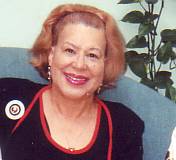
Mary Lee Brady, Ph.D. 










| | 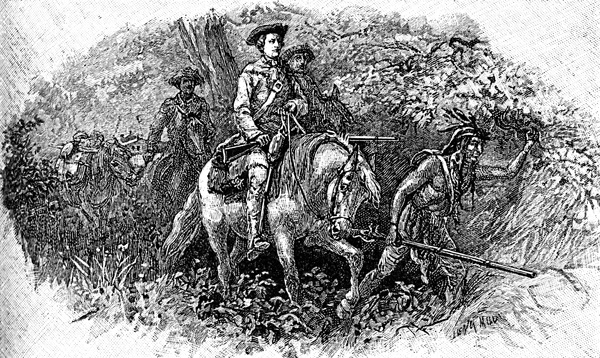
William Lee during the American Revolutionary War of 1775-1783 served with honor pursuant documentation provided by President George Washington a few months before death in 1799. William Lee was born in year 1756, during the French and Indian War, and fathered by John Lee who he believed and we assume was told to be his father and owner of his enslaved mother (records unknown as is often the case in trying to identify parentage of slaves.) William Lee likely knew and took pride that he was fathered by Colonel John Lee of the Virginia militia. We do not know who was his African heritage mother, likely owned by John Lee and apparently his concubine as a chattel slave. Having no children by Mary, his legitimate wife, ... it is not difficult to imagine that Colonel Lee apparently nurtured William and his brother Frank within his household as sons. When John Lee died, his legal widow did the common custom of auctioning off the two boys and perhaps other slaves of her late husband; and, George Washington appeared to buy both William and Frank, paying a very high price. We think Washington did the honorable thing for a Virginia gentleman as he imagined himself to be. His friend John Lee had died and would not have wanted his flesh and blood denigrated to live and work in the back-breaking labor and conditions of field slaves. And, by year 1768, Washington knew very well that young William had the traits he admired in all the Lee clan: great horsemanship. 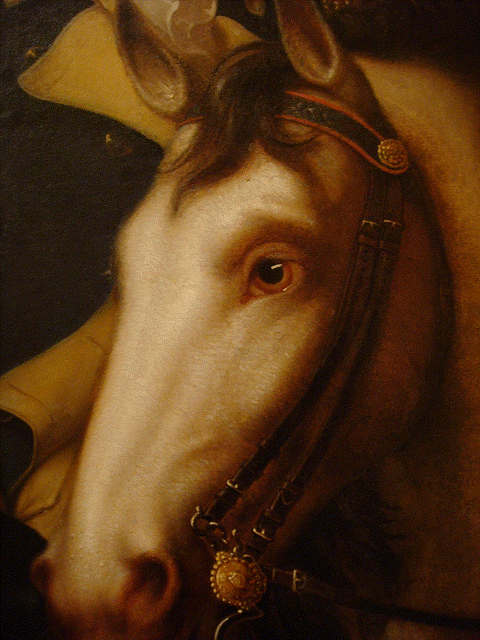
By age 12 years, William was at the age of puberty for Black, Mulatto or White boys in that era and most certainly performing the kinds of tasks that men such John Lee or George Washington or even Thomas Jefferson's father Peter Jefferson had their sons doing for household chores: running errands to fetch the mail, feeding, harnessing and caring for their horses plus collecting firewood and water from outside the residence. When George Washington came to fetch William and Frank, there is little doubt the boys mounted a horse to ride away with him. The notion that George Washington purchased them to be house-servants because they were light complexioned is typical of color based reasoning in America. "When Francis ("Frank") Lee, George Washington's former butler, died in the summer of 1821, the Alexandria Gazette included an obituary for him." Mt. Vernon Ladies Association. Capabilities to be or do anything other than the most menial of tasks still dominates color based reasoning: "On 3 May 1768, George Washington purchased Lee, then a teenager described in Washington's account book as "Mulatto Will", from the estate of the late Colonel John Lee of Westmoreland County, Virginia for sixty-one pounds and fifteen shillings. William kept the surname "Lee" from this previous owner, John Lee, believed to have been his father. Also purchased at this time was William's brother Frank, as well as two other slaves. Washington paid high prices for William and Frank, as they were to be household slaves rather than field laborers. Light-skinned mulattoes like William and Frank were often chosen to serve as domestic servants, who were given responsibilities and privileges most slaves never enjoyed. Frank became Washington's butler at Mount Vernon, while William served in a variety of roles, including Washington's valet or manservant. As valet, Lee performed chores such as brushing Washington's long hair and tying it behind his head." This description placed on wikipedia regarding William Lee is highly speculative and unacceptable. It is especially relevant that all the modern biographers noticeably ignore any and all facts about slaves also being fathers. William Lee is believed by us to have fathered Nancy Lee, (born abt. 1774 at Mount Vernon), and called herself: Nancy Lee who was the aunt of my great-grandmother Nancy Lee (born born in 1825 and died in 1912) after telling the story to my Aunt Nancy Lee (born in 1906 and died in 1995.) 
It is thus insulting to George Washington and William Lee to imagine the highlighted description (red-lined) posted on the web. It is not applicable to Washington and Lee. The writer obviously perceived them as having some type of obviously effeminate aristocratic behavior, not super active out-doormen like George Washington whose love of horses would more likely had William Lee brushing horsehair. and his brother Frank tending to wagon carriages used by the Washington family. Anyone who has ever cared for horses, even one, knows that it is a daily and often hourly chore to harness, exercise, water, feed, and brush them in addition to cleaning up their waste. Indeed, George Washington was not the kind of man sitting and being prettied by someone other than his wife albeit a future generation of perfumed slave owners in places like Charleston, South Carolina may have occasionally done so imitating the French and English aristocracy they sought as models. From time of the ending of the French and Indian War in 1758 until the time of William Lee's purchase by him, Washington would have devoted virtually all his hours, days, months and years outdoors earning his living as a surveyor and plantation owner not given to the frills of ante-bellum living. He bought and needed William Lee as a functional aide to help him ride, camp and survey vast lands stretching westward and won via the war against the French and Indians. George Washington died in 1799 before emergence of the ante-bellum terms and descriptions such as body servants and valets were generalized to describe any and all mulatto male slaves not enslaved to work in the fields/farms. 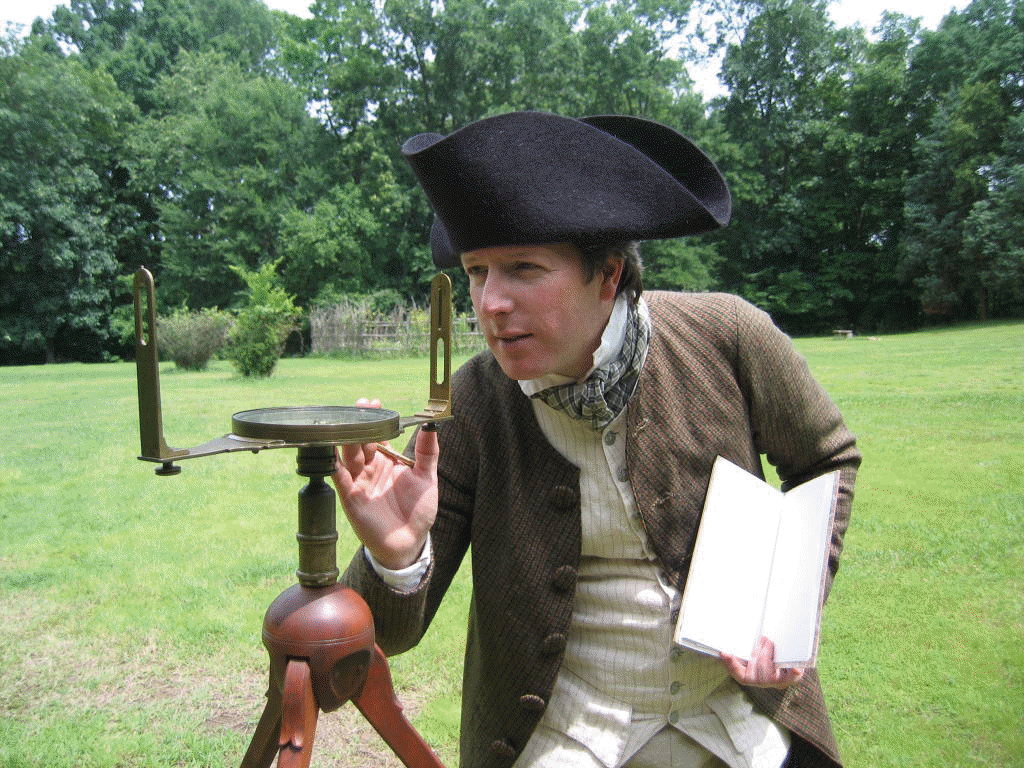
We thus challenge the entire reasoning about the principal reasons for George Washington in purchasing William, and the attributes that made him an asset in skills and abilities not existing in ordinary masters or slaves. George Washington was very busy, out and about, earning a living during the years following acquisition of William Lee who certainly would have been a traveling companion to: scout terrain, make camp, care for horses, prepare meals, place survey stakes, and other functional tasks requiring more than one man. Map Making-Survey Assistant Facts are that even before Congress appointed George Washington as Commander-In-Chief of the Continental Army, he would have as an experienced battle hardened soldier, assured that all his personal aides, including William Lee, were qualified to be his body guards, able and willing to ride for hours and miles in security formation; and use weapons such as the musket, pistol and sword. "Washington was a frequent fox hunter, and Lee became his huntsman (the person in charge of the hounds), a role that required expert horsemanship. In his memoirs, Washington's step-grandson George Washington Parke Custis described Lee during a hunt: Will, the huntsman, better known in Revolutionary lore as Billy, rode a horse called Chinkling, a surprising leaper, and made very much like its rider, low, but sturdy, and of great bone and muscle. Will had but one order, which was to keep with the hounds; and, mounted on Chinkling ... this fearless horseman would rush, at full speed, through brake or tangled wood, in a style at which modern huntsmen would stand aghast.[2]
Before the Revolutionary War, Lee often traveled with Washington to the House of Burgesses in Williamsburg, or on journeys such as a surveying expedition to the Ohio Valley in 1770 and to the First Continental Congress in Philadelphia in 1774. Lee served at Washington's side throughout the eight years of the Revolutionary War, including the winter at Valley Forge and at the siege of Yorktown. According to historian Fritz Hirschfeld, Lee "rode alongside Washington in the thick of battle, ready to hand over to the general a spare horse or his telescope or whatever else might be needed...."[3] After the warIn 1785, Lee injured a knee while on a surveying expedition with Washington. Three years later, while going to the post office in Alexandria, he fell and injured his other knee, rendering him seriously disabled. When Washington was elected president in 1789, Lee attempted to make the journey to New York City for the inauguration, but had to be left in Philadelphia for medical treatment. He was attended by several physicians, who made a steel brace for his knee that allowed him to join Washington in New York. Lee's disabilities prevented him from continuing his previous duties, however, and he spent the last years of his life as a shoemaker at Mount Vernon, struggling with alcoholism. Revolutionary War veterans who visited Mount Vernon often stopped to reminisce with Lee about the war. When Washington died in 1799, he offered to free William Lee in his will, citing "his faithful services during the Revolutionary War". Lee was the only one of Washington's 124 slaves freed outright in his will; the remaining slaves owned by Washington were to be freed upon the death of Martha Washington. (Another 153 slaves living at Mount Vernon were the property of Martha's first husband's estate, and could not be freed by Washington.)[4] Lee was given a pension of thirty dollars a year for the rest of his life, and the option of remaining at Mount Vernon if he wanted. Lee chose to live out the rest of his life at Mount Vernon, where he is buried. "If Billy Lee had been a white man," wrote historian Fritz Hirschfeld, "he would have had an honored place in American history because of his close proximity to George Washington during the most exciting periods of his career. But because he was a black servant, a humble slave, he has been virtually ignored by both black and white historians and biographers."[5] Nancy Lee Banister, born abt 1825 believed William Lee was her grandfather, and the probability exists that her mother Rose Lee (Carter), born 1788 was a free colored emancipated in 1806 would likely have taken her to be viewed by him before his death at Mount Vernon in 1828. In writing about the story of his life, we dare to wonder and believe that he also perceived and valued the existence of family ties, and would have wanted daughter Rose to bring the new born child Nancy to him. At least one scholar has offered documentation that William Lee could both read and write, was a evangelical Christian and likely taught his nephew Christopher Sheels to do so. We are now informed by scholars that it was Sheels portrayed in the death-bed scene of George Washington in 1799. 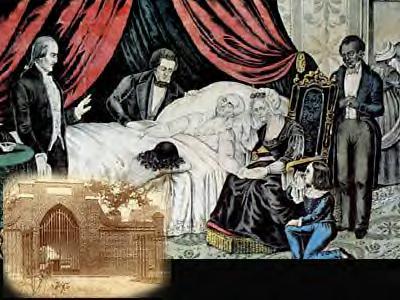
The scene is significant for believers to remember that from the loins of "the least of us" at Mount Vernon, not the mighty, came generations in pursuit of goodness. Indeed, the numbers and locations of Lee descendents traceable to William and Frank Lee are almost like grains of sand on the beaches of our imaginations. It is both lazy and silly for educated folks to speculate about it, and dismiss matters of DNA documentation now possible to help affirm the promise in faith so many claim to hold dear, as did William Lee. One of the difficulties to keep in mind about generations of everlasting life via William and Frank is that each successor generation apparently gave birth to twins, often a male and female further complicating the research as to who was related to who and where. Another point to remember is that chattel slavery in the 17th, 18th and 19th century deliberately encouraged the breeding of more slaves with girls being induced and seduced at the earliest possible age for pregnancy. In fact, the book value and credit worthiness of slave plantations included not only acreage and farm crops but the numbers of adult slaves capable of labor and their off-spring for future labor as slaves. The below picture of the Washington family is pertinent to any review about the life of William Lee because it is one of the few paintings that George Washington ever sat for and allowed. He decided who was in the portrait, including William Lee, and how he wanted to be remembered by America. He was the first President of the United States during this setting, but he chose to be portrayed in his military uniform as Commander-in-Chief of the new United States his revolutionary war services, pointing to a parchment displayed on the table, that he had helped make possible. He chose Martha, her children and William Lee who had been with him throughout the war that raged from 1775 to 1783. He did not include any government officials or mansion staff such as aides like Christopher Shield because being Washington, he George, wanted us to remember him as he was when, as a functional patriot, he championed the cause of liberty. And, this is how we choose to remember William (Billy) Lee, as a functional patriot, not simply a slave. In fact, it is very doubtful that many slaves or free men could have had the abilities and stamina to keep up with pace of George Washington from at least 1775 until he took the 1789 oath of office as President U.S.A. Edward Savage’s iconic portrait of the Washington Family was originally painted c. 1789-1790. George Washington purchased two engravings of the painting to display at Mount Vernon (one of which is pictured here). It portrays George and Martha Washington, two of Martha’s grandchildren, George Washington Parke Custis and Eleanor Parke Custis, and George’s body servant, a black slave named William “Billy” Lee (image courtesy of Mount Vernon Ladies' Association). 
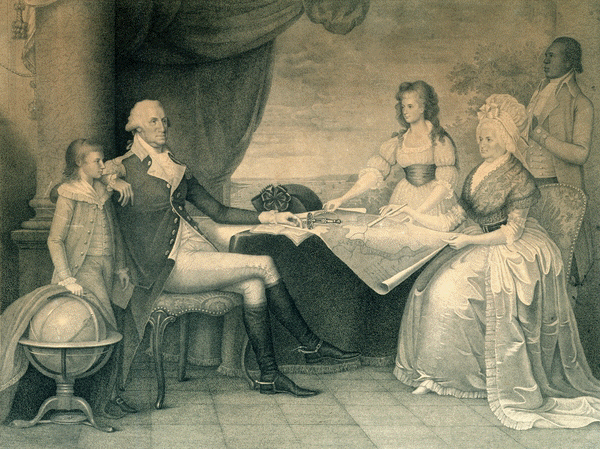
Edward Savage, The Washington Family, engraving after the original, c. 1789-1790 NOT A PORTRAIT OF WILLIAM LEE (Artistic perception for commercial sales, akin to popular and profitable outside lamp holder) 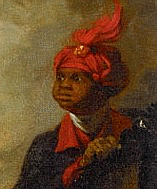
Note: George Washington listed William Lee as a mulatto, but the artist/illustrator for this image by John Trumbull, as did other artistic portrayals of African-Americans, darkened his complexion, enlarged his mouth and removed any suggestions of a White heritage, including wearing of a hat uniformly worn by all men of that era who rode, fed or watered horses. The perception that George Washington would have designed and had William wear a turban to distinguish him as a slave is more akin to a inherited wealth mansion dwelling aristocrat than a man like Washington who highly valued the welfare of horses. It is quite unlikely that George Washington would have allowed any of his aides or troops to wear or emblazon themselves in the color red used by British forces (redcoats). Even more, William Lee was not a ante-bellum era plantation mammy with a scarf around his neck and decorative rags covering his head. As a soldier in the American Revolutionary War, illustrator John Trumbull rendered a particular service at Boston by sketching plans of the British works. He witnessed the Battle of Bunker Hill. He was appointed second personal aide to General George Washington, and in June 1776, deputy adjutant-general to General Horatio Gates. He resigned from the army in 1777 after a dispute over the dating of his officer commission. In 1780 he traveled to London, where he studied under Benjamin West. At West's suggestion, Trumbull painted small pictures of the War of Independence and miniature portraits. He painted about 250 in his lifetime. Trumbull earned a lot money with his painted images of famous persons such as George Washington and William Lee. It is doubtful that John Trumbull ever saw William Lee wear a turban, and likely gained the notion of portraying an African with a turban and fancy clothes from the popular stories and images in Italy and France of slaves at various royal courts. Even so, enough is known to understand that William and his brother Frank were classified as mulatto and the common custom of owner's children not being assigned to live and work as field hands. So, it almost always was not simply at Monticello but throughout most respectable slave plantations, known and rumored to be but never required as documentation because legal codes specifically existed to prevent such. Lee's wife was Margaret Thomas Lee, a free woman (possibly Mulatto or Native American) from Philadelphia who had worked as a servant in Washington's headquarters during the war. Although slave marriages were not recognized by Virginia law, in 1784, at the couple's request, Washington tried to arrange having Margaret move to Mount Vernon to live with her husband. Whether or not she ever came to Mount Vernon is unknown.[4] 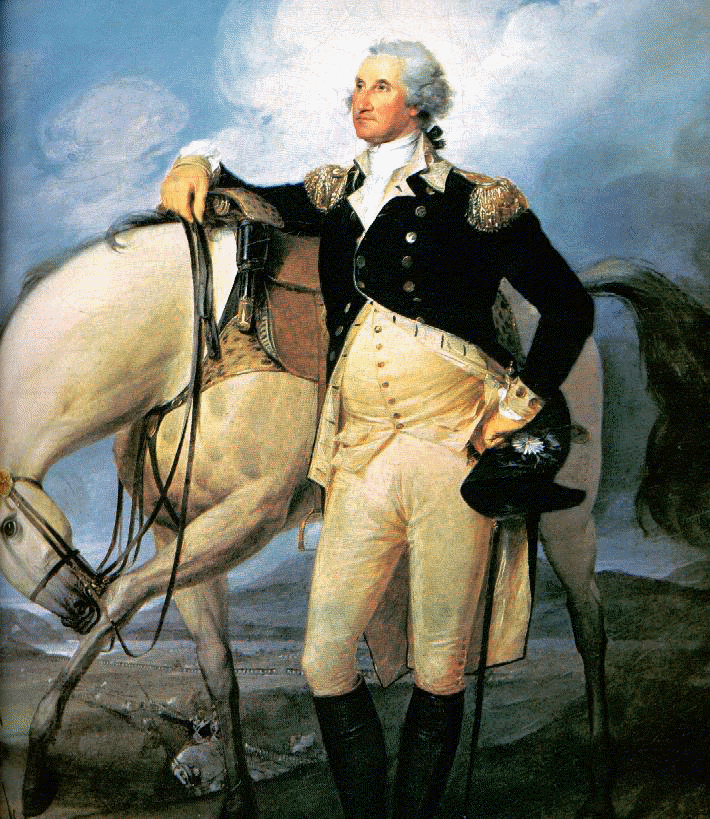
Whether Margaret Thomas died in 1801 or later, she was unlikely to not have been considered the wife of William as of the 1786 property listing by George Washington. And in the Christian mindset of George and Martha Washington (devout Episcopalian), they would have allowed William as a slave to marry again sometime before the property listing by George Washington in 1799. Records confirm that William chose to remain at Mount Vernon in his legal status as a pensioned slave following the death of George Washington in 1799. His decision to retain the status as a slave explains why he was not listed in the Arlington County registry of free Negroes in accordance with Virginia law. William Lee returned to Virginia with George Washington following the war and short stay in Philadelphia, but without a wife. We have reasoned that William Lee, a continuous body guard and servant to George Washington, was absent from the vicinities of Mount Vernon Virginia during the war years of 1775 to 1783; and during the interim years of 1783-1785 in Philadelphia he was married to Margaret Thomas, a free woman. 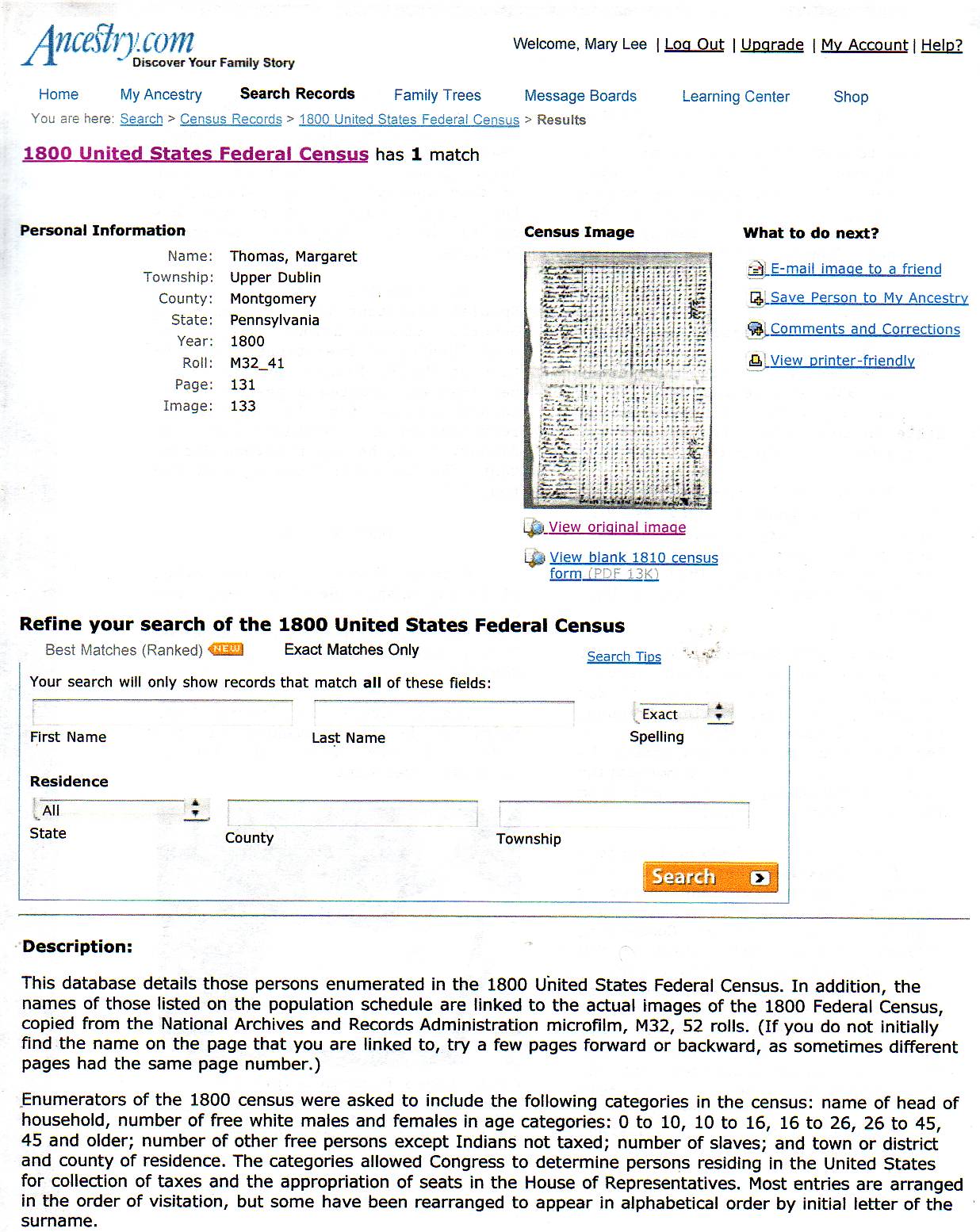
In 1785, Lee injured a knee while on a surveying expedition with Washington. Three years later, while going to the post office in Alexandria, he fell and injured his other knee, rendering him seriously disabled. When Washington was elected president in 1789, Lee attempted to make the journey to New York City for the inauguration, but had to be left in Philadelphia for medical treatment. He was attended by several physicians, who made a steel brace for his knee that allowed him to join Washington's presidential household. Frank's nephew, Christopher Sheels, assisted Lee in New York City, and took over Lee's duties in 1790 at the Philadelphia President's House. This more or less confirms our belief that Christopher Sheels is not the person portrayed in the official painting of George Washington and his family for posterity sake. When Washington died in 1799, he freed William Lee in his will, offering freedom to "his faithful services during the Revolutionary War". Lee was the only one of Washington's 124 slaves that could be freed outright in his will; the remaining slaves owned by Washington were to be freed upon the death of Martha Washington. (Another 153 slaves living at Mount Vernon were the property of Martha's first husband's estate, and could not be freed by Washington.)[5] Lee was given a pension of thirty dollars a year for the rest of his life, and the option of remaining at Mount Vernon if he wanted. Lee chose to live out the rest of his life at Mount Vernon, where he died in 1828 and assumed buried near his brother Frank who died in 1821. In 1863, the two brothers were joined in the slave cemetery by West Ford who they obviously had known and nurtured when he had lived at Mount Vernon following the death of George Washington and ownership by Bushrod Washington. Click below for Mount Vernon Ladies Association report about whether or not George Washington was father of West Ford: Francis Frank Lee, Butler "If Billy Lee had been a white man," wrote historian Fritz Hirschfeld, "he would have had an honored place in American history because of his close proximity to George Washington during the most exciting periods of his career. But because he was a black servant, a humble slave, he has been virtually ignored by both black and white historians and biographers."[3] Washington and Lee were famous men, master and slave, portrayed by many artists and illustrators during and after the revolutionary war and even after both were dead. Below are examples by artists/illustrators who likely never saw them but used illustrations from other artistic renderings even in France wherein the French influence is apparent: left hand over his breast and a horse with braided tail, European style. 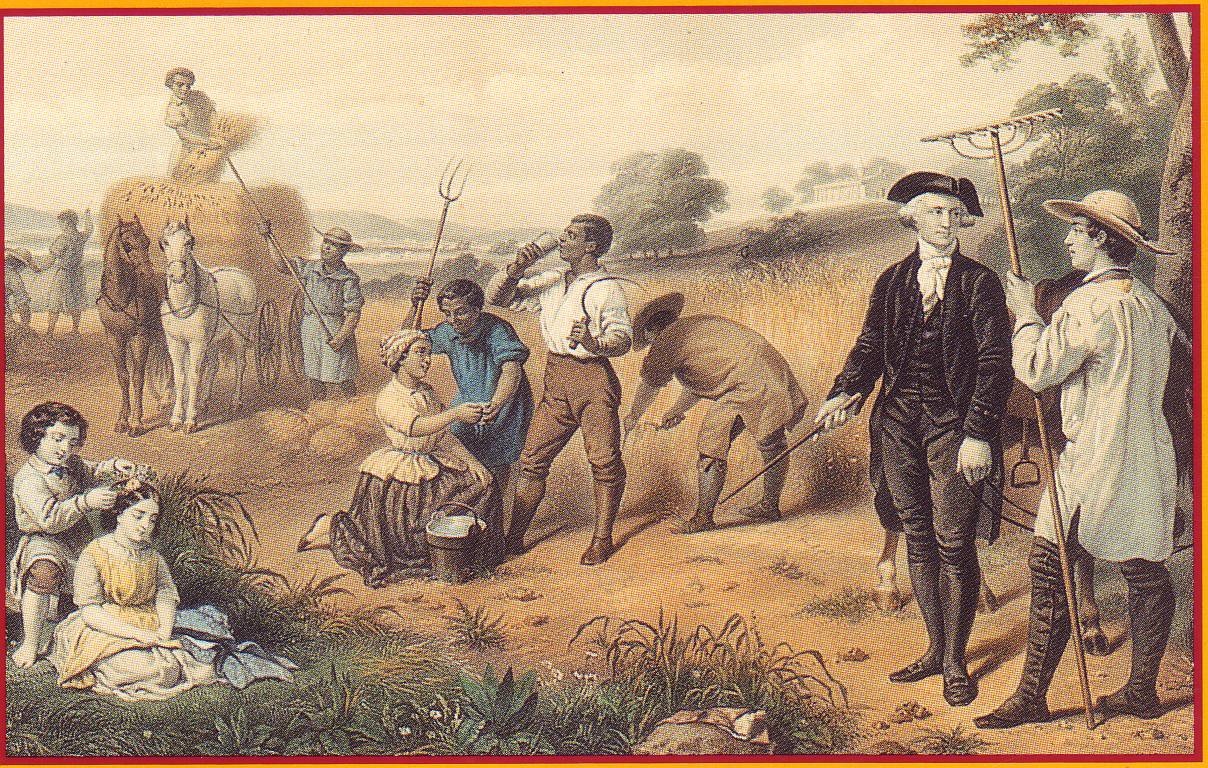
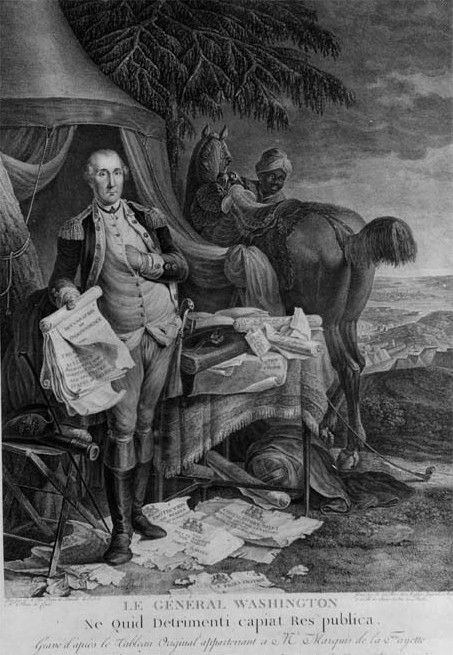
Washington was a frequent fox hunter, and Lee became his huntsman (the person in charge of the hounds), a role that required expert horsemanship. In his memoirs, Washington's step-grandson George Washington Parke Custis described Lee during a hunt: "Will, the huntsman, better known in Revolutionary lore as Billy, rode a horse called Chinkling, a surprising leaper, and made very much like its rider, low, but sturdy, and of great bone and muscle. Will had but one order, which was to keep with the hounds; and, mounted on Chinkling ... this fearless horseman would rush, at full speed, through brake or tangled wood, in a style at which modern huntsmen would stand aghast.'[1]
Before the Revolutionary War, Lee often traveled with Washington to the House of Burgesses in Williamsburg, or on journeys such as a surveying expedition to the Ohio Valley in 1770 and to the First Continental Congress in Philadelphia in 1774. Lee served at Washington's side throughout the eight years of the Revolutionary War, including the winter at Valley Forge and at the siege of Yorktown. According to historian Fritz Hirschfeld, Lee "rode alongside Washington in the thick of battle, ready to hand over to the general a spare horse or his telescope or whatever else might be needed...."[2] During and after the war for independence from Great Britain, African-American men (officially listed as about 5,000) like William Lee who fought and even died in the cause were not regarded by scholars as patriots; but, if they chose to serve, as approximately 25,000 did in the British Forces (Ethiopian Regiments) that promised them freedom, ... they were widely condemned by most lawyers as traitors and criminals. In our view, regardless of what scholars may have chosen to write, ... any man that could keep up with George Washington was a patriot. And, any men who chose to enlist in lieu of their owners were pawns of the slave-owners but still historical patriots because they did serve unlike the many who did not. Such is the legacy of William Lee handed down through two centuries of African-Americans who have served for various reasons, .... having in common the utter refusal of most scholars and writers to view and record them as being patriotic. It is not surprising that in all 20th century movies generated with characterizations of African-American men at war, ... the theme of cowards, traitors, and criminals as non-patriots is consistently to be found. I speak for most Lee and Hemings descendents when I declare "enough!" Stop degenerating generations that came before us or your own. 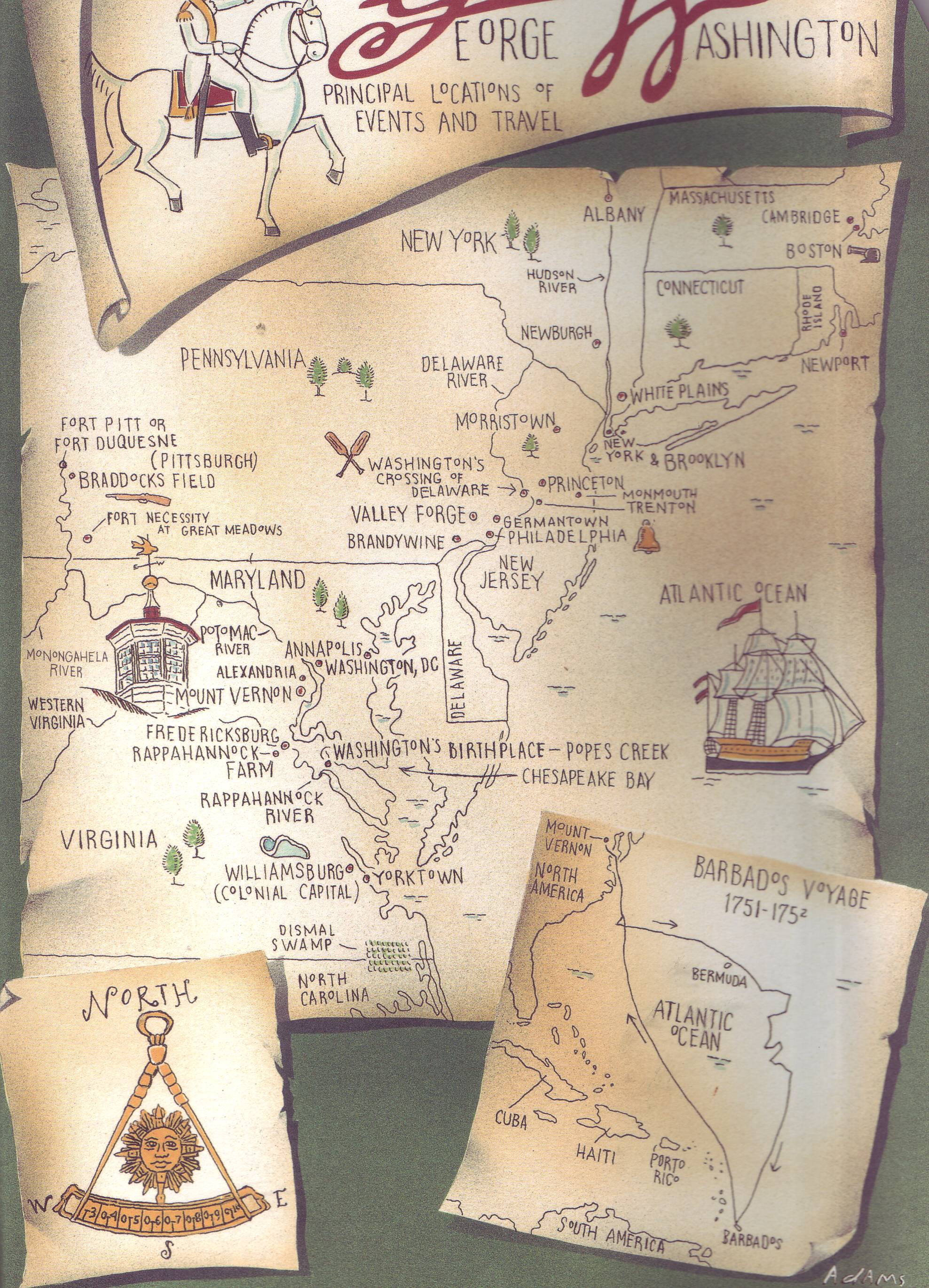
Valley Forge Aftermath The slave inventory of 1786 compiled by George Washington reflected that William Lee did not have a wife at Mount Vernon, and assumptions are that he likely copulated with Sarah Carter, a woman owned by Robert Carter III prior to William's listing in George Washington 1799 inventory as having a wife named Aggy. 
| Name: | Sally Carter |
|---|
| Home in 1810 (City, County, State): | Westmoreland, Virginia |
|---|
| Free White Persons - Females - Under 10: | 2 |
|---|
| Free White Persons - Females - 10 thru 15: | 1 |
|---|
| Free White Persons - Females - 26 thru 44: | 1 |
|---|
| Numbers of Slaves: | 1 |
|---|
| Number of Household Members Under 16: | 3 |
|---|
| Number of Household Members Over 25: | 1 |
|---|
| Number of Household Members: | 5 |
|---|
William Lee had access to Sarah Carter on the Carter Estates and had a relationship with her that apparently existed between 1786 when George Washington listed him as not having a wife at Mount Vernon and the 1799 listing by Washington reflected his wife to be Aggy. Sarah (Sally) Carter listed in the 1870 census supports our belief that she was the mother (born about 1774) of my great great grandmother Rose Lee (Carter) born abt.1788 during the period of George Washington's listing that he did not have a wife among slaves at Mount Vernon owned by himself and his wife. Our research to try and understand the events in lives of mothers like Aggy, Sarah and Rose led us to many near tearful conclusions that Sarah had children in addition to Rose, and that though listed as White in the 1810 colored registry for Westmoreland County, she was on the slave schedule of Henrico County in 1850 possibly re-enslaved for infractions of the various laws that essentially charged sheriffs to view ex-slaves, whether or not indentured as potentials to be re-enslaved. | Name: | Sarah Carter |
|---|
| State: | VA |
|---|
| County: | Henrico County |
|---|
| Township: | My Dist. |
|---|
| Year: | 1850 |
|---|
| Record Type: | Slave Schedule |
|---|
| Page: | 345 |
|---|
| Database: | VA 1850 Slave Schedule |
|---|
Rose Lee (Carter), born 1788 Data supports oral history that he likely fathered Rose Carter (Lee) by Sarah (Sally) Carter and children by Agness as reflected in the 1824 court records. The second slave listing draw up by George Washington in 1799 reflects that William Lee had a wife at Mount Vernon. Sinah Lee, born abt 1786 On the schedule of property by George Washington about six-months before his death, Aggie is listed as a slave at his Dogue Run Farm and being married to a man named Will. Both the family oral history and court records affirm that William Lee had a slave marriage to Aggie, ... and it was recognized by George and Martha Washington. The suggestion by some scholars that Aggie was married to a different Will is not reflected in the details provided by George Washington. Slave marriage was a privilege granted by owners, never a right by custom or desire of the parties to be wed even if living and working in the same location. Slave owners such as George Washington and his hired overseers when such privileges were granted did not always allow for or encourage co-habitation. Quite often travel to and from a husband or wife was denied as a punishment for some minor infraction not serious enough to warrant flogging or more severe measures. A married man or woman required special permission, for example, to travel from one of George Washington's farm locations to another, ... even to visit his wife and children acknowledged and approved by the owner. It is quite easy to understand that overseers and even owners were never quite clear as to fathers of slave offspring, and often were in error as to who was who. Artistic romanticizing of slavery became an American past-time quite soon after the revolution and establishment of the republic. The portrayal of happy slaves and kindly owners was a popular theme that spanned the 19th century even until the end when musicians often sang and danced their way to fame and fortune as minstrels portraying settings that had never existed. Freedom was never free without a further price to paid. 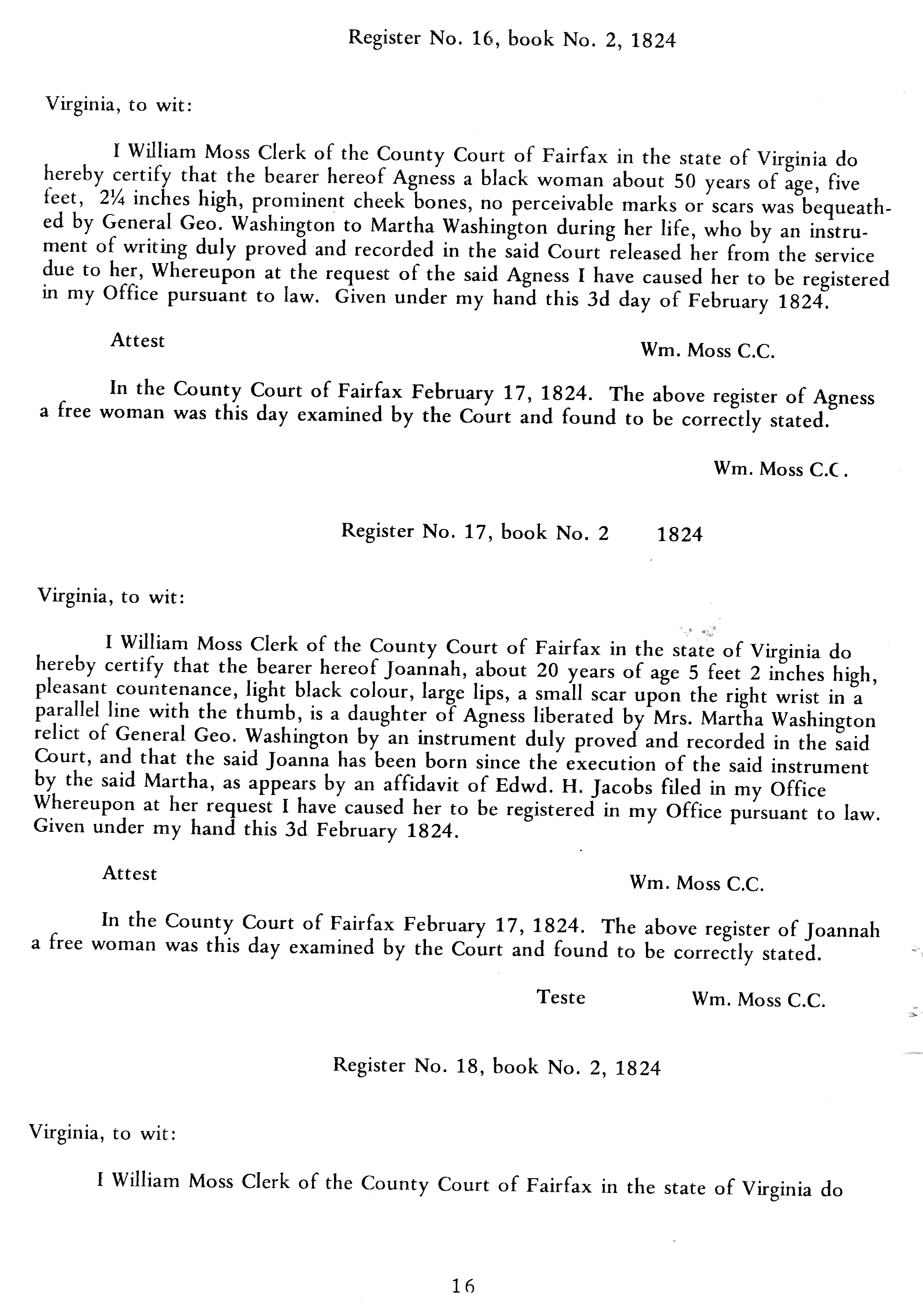
For us, the first challenge is to believe the brothers William and Frank were believers, ... though unlikely educated or allowed baptism and worship in the church of their father John Lee or master George Washington. So, such being the likely denial, how would such youth come into the faith that generated eight generations with thousands of human beings via their DNA chain? Does it matter, and to who? One of the difficulties to keep in mind about generations from William and Frank is that each successor generation apparently gave birth to twins, often a male and female further complicating the research as to who was related to who and where. Another point to remember is that chattel slavery in the 17th, 18th and 19th century deliberately encouraged the breeding of more slaves with girls being induced and seduced at the earliest possible age for pregnancy. In fact, the book value and credit worthiness of slave plantations included not only acreage and farm crops but the numbers of adult slaves capable of labor and their off-spring for future labor as slaves. 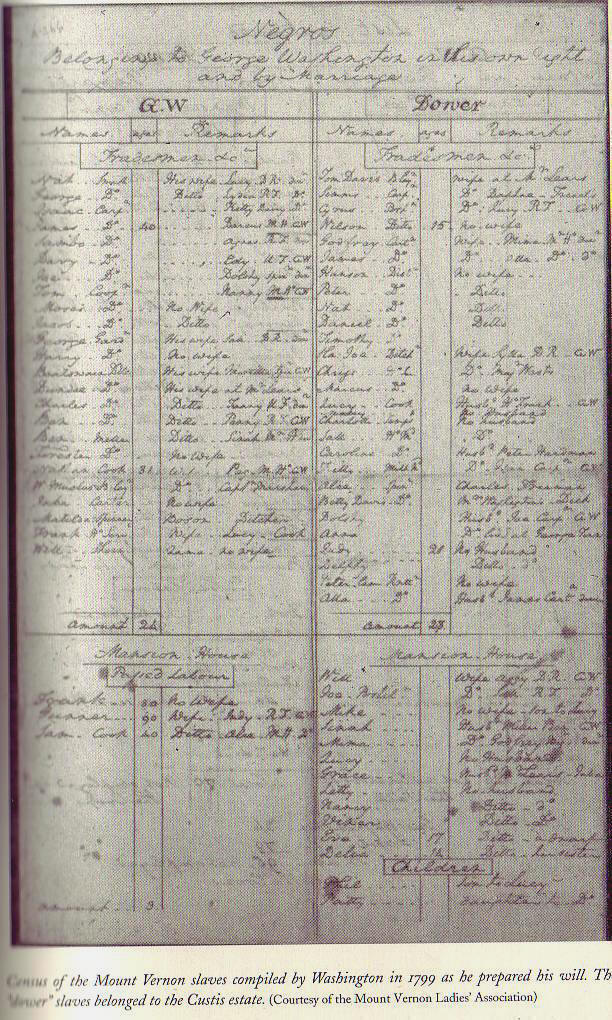
|

































